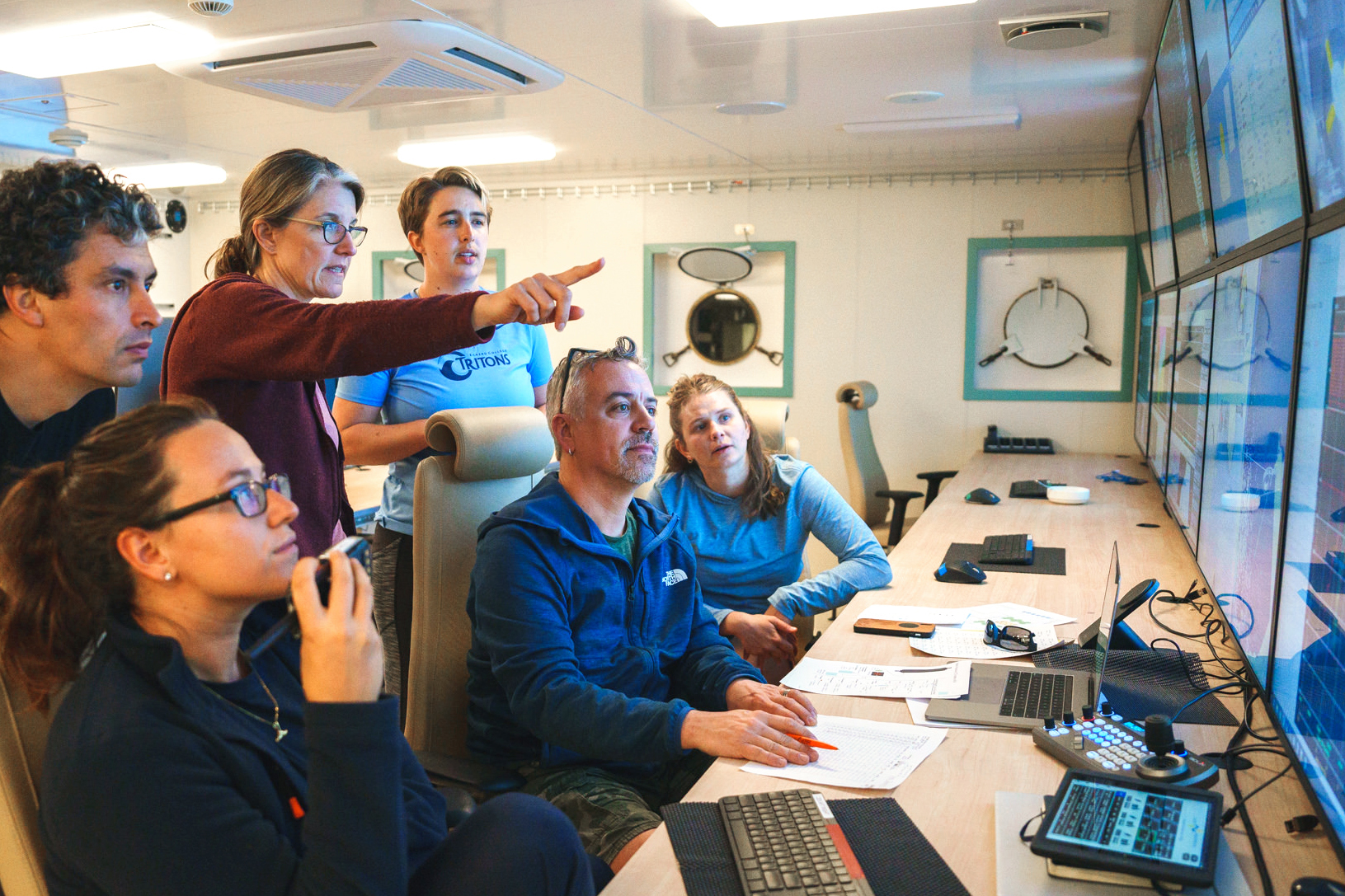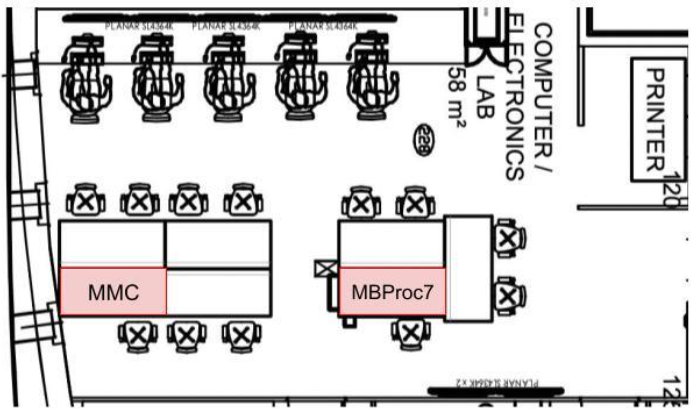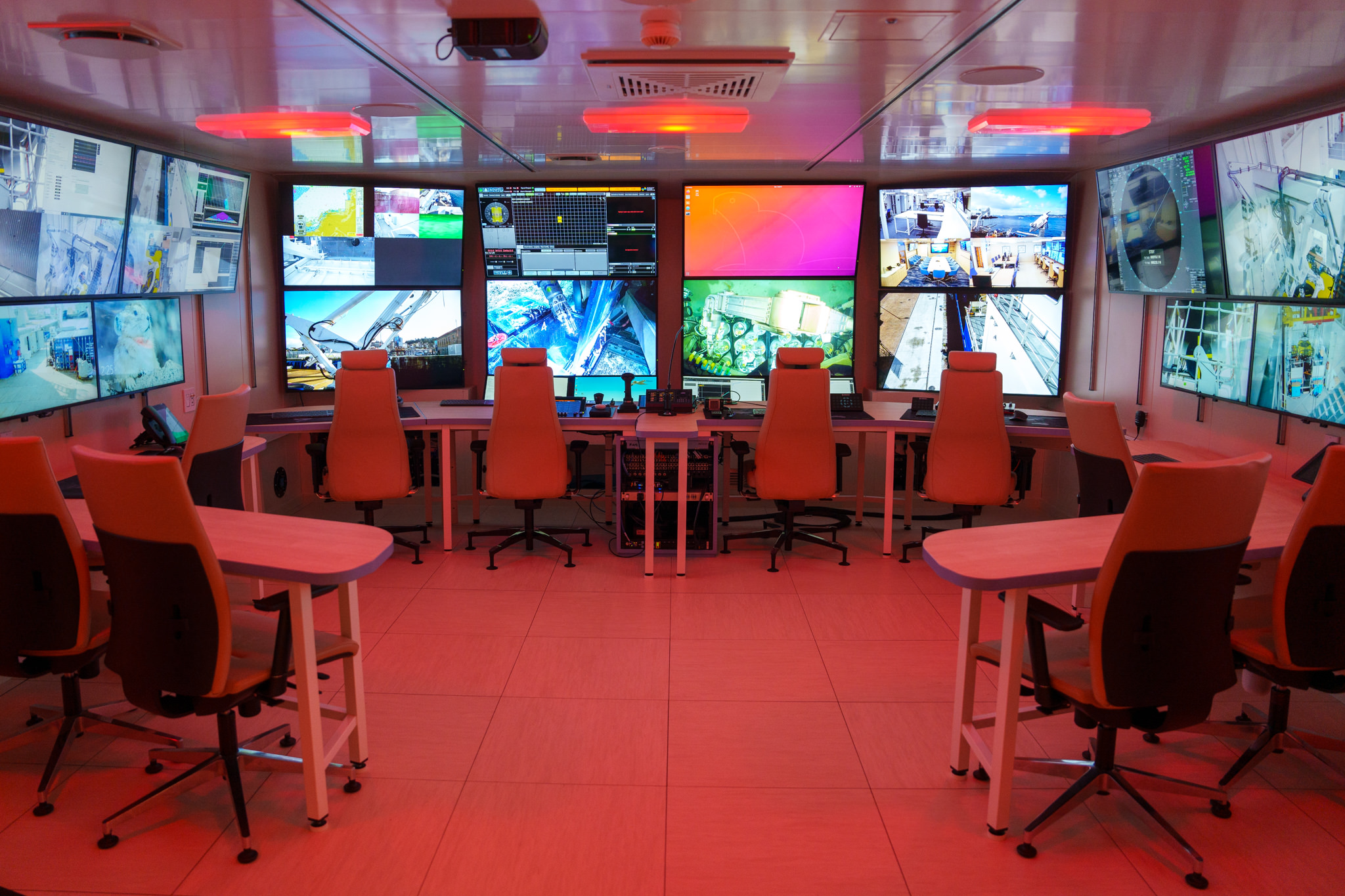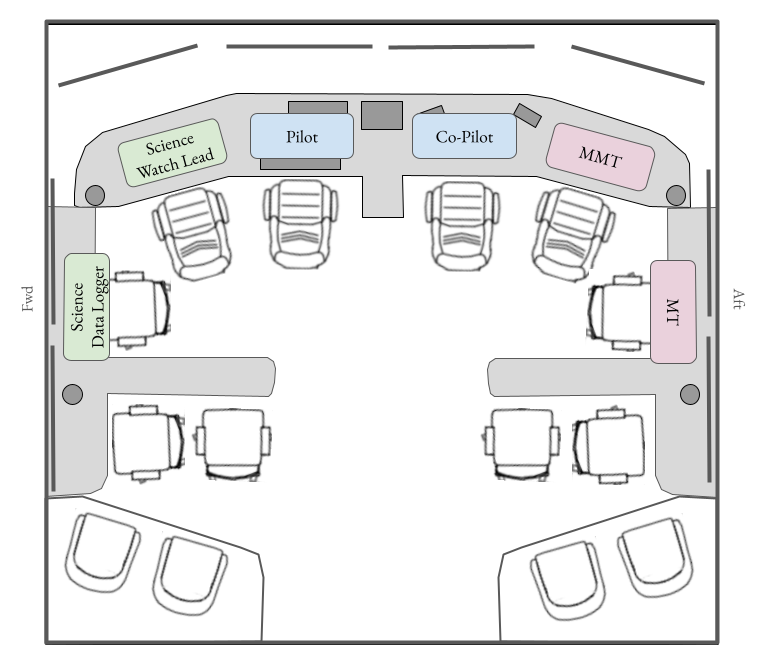Lab Orientation
Lab Rules and Safety
There are a lot of potential hazards in a laboratory aboard a ship, but for the most part, assume all of your institution’s laboratory rules apply to our laboratories onboard Falkor (too).
Lab Rules
Absolutely no food or drinks allowed in the labs. There is a bin outside the Main Lab for water bottles.
Proper laboratory PPE must be worn when in the labs. Close toed shoes are required.
Open flame is not permitted in the labs.
Secure loose objects, such as chemicals and equipment.
Please alert the technicians if you hear any alarms, if a piece of equipment is operating abnormally, or if you turn on the main lab oven.
Chemical Safety
You must submit a complete list of your cruise chemicals and their SDS sheets during the cruise planning process. The Marine Technicians will prepare a binder with all the SDS sheets and that will be posted outside of the main lab in the event there is a fire or another chemical emergency.
All chemicals must be clearly labeled in a secure spill proof container.
Each lab has an Acid, Base, and Flammable cabinet which should be used to store day-use chemicals. Do not store incompatible chemicals together.
Spare chemicals can be stored in the Science Chemical Locker, a ventilated locker with its own fire suppression system.
Avoid skin and eye contact with chemicals.
Laboratory safety glasses or goggles should be work when chemicals are used or anytime there is a risk of splashes.
Atleast one chemical rinse is located within each lab. This can be used as either a shower or an eye wash. If you get chemicals in your eye, immediately go to an eye wash station and get the attention of a Marine Technician or another scientist. The MT’s will reference the SDS sheet, but in general, rinse your eye for a minimum of 10 minutes.
One full sized chemical shower is located in the Hydro Lab. In the event you have a chemical spill on your clothes, you need to immediately get to the shower and remove the affected clothing otherwise the chemical will continue to burn. We will do our best to ensure privacy if this happens.
Do not pour chemicals down the drains, please consult a Marine Technician for safe disposal.
Gear Securing
It is of the upmost importance to have all items secured as part of the mobilization process. This will ensure that you and your gear is ready to get underway in any weather condition. While the ship is equipped with some items to secure gear, we always recommend bringing extra bungees and ratchet straps. We do not permit screwing anything into the lab counter tops, so we have a unistrut system integrated into our counter tops for securing. In the main lab, there are also under bench and over bench cabinets for securing loose gear.
Gear Storing
If you are planning on storing gear on the ship after your cruise, whether its for a later cruise, another chief scientist, or for pickup in a different port, please do the following:
Communicate your intentions with the Lead Marine Technician.
Label all gear thoroughly with your name, cruiseID and contact information.
If its meant for another PI or cruise, add their name, cruiseID and contact information as well.
Give an inventory of all of the gear and their destinations to the Lead Marine Technician.
Labratory Equipment
To be updated soon! :)
Lab Ettiquette
Computer Lab
The Computer Lab is the central hub for the rest of the labs. In general, the Chief Scientist sets up their workstation here, with easy access to the MT Office, ROV Office, Main Lab, and Mission Control Room. The Computer Lab has several screens, which monitor appropriate feeds according to the current activity.
Work Space
Workspace is limited, but we ask that two stations are reserved according to the photo below:
In addition, depending on the operation currently being held, we may have to move computers or people that are sitting along the workstations on the aft bulkhead, in front of the large screens.
Food and Drink
We do not prohibit food and drink from the computer lab, but any liquids need to have a lid as the technical flooring has electronic cabling all throughout the lab.
Please bring any mugs or plates back to the galley as soon as you are done with them.
Screen Displays
- You are welcome to utilize the EVERTZ iPad’s to change the displays in the computer lab but please note that the stream decks are programmed to change the screens to a set configuration, so as operations move forward, you may need to keep adjusting back to your desired display.
Conference Room
The conference room is a multipurpose room reserved for meetings, zoom calls, and as a quiet workspace.
Please take off outdoor shoes, or wear shoe coverings, when using the conference room.
Feel free to close the door and mark the room as “meeting in progress.”
To reserve this room, please utilize the whiteboard on the door with your name and meeting time.
You can use this room as personal workspace, but you must respect the reserved timeslots for meetings.
If its the first time using this room for a meeting, chat with AVIT support for an intro on how to operate meeting equipment.
Lounges
Our founders designed the lounges aboard Falkor (too) to ensure the scientists and crewmembers have space available to step away from work to relax and recharge. The following rules will help ensure this is a relaxing and welcoming space for everyone:
- Clean up before you leave- trash and dishes should be taken care of and pillows should be put back to where you found them.
- Keep volume reasonable- there are people sleeping above and below the lounges at all hours of the day.
- Avoid Meetings/having a workstation in lounges. We’ve had issues with science parties setting up a workstation in the lounges and asking crewmembers to leave if they have meetings.
- Do not sleep in the lounges.
Mission Control
When our Mission Control room on Falkor (too) was being designed, careful consideration was made to ensure that the room layout fosters a productive work environment while also ensuring that scientists felt welcome to be in there and be a part of the dives. The rules below are to help keep this room inclusive and welcoming, while also maintaining a professional and productive workspace.
Room Layout
The front of the room is reserved for watchstanders and operators, with the science watch lead all the way to the left, the pilot and copilot in the middle and the MMT on the right. Behind the science watch lead is reserved for the science data logger and behind the MMT is reserved for an MT. The other seats in the room are open to other science party members.
Mission Control Rules
- Launch and recovery of the ROV requires lots of concentration and communication. During these maneuvers, mission control is restricted to only personnel involved in those operations.
- If you have an unrelated conversation to the dive/science, please take it outside of mission control.
- The person in the Watch Lead seat leads the operations. Any requests for sampling or dive actions should be directed through them instead of directly to the pilots.
- Mission Control is meant to be a shared space for people who are involved in dive operations, please do not choose a station here as your cruise workspace. The other labs or the conference room are better locations.
- Mission Control is a shared area- please tidy after yourself before you leave.
- Do not lean on or move the pilots chairs as they are flying the ROV or using the manipulators.
- Food and drinks are not proibited in Misson Control- but please be mindful. Liquids should have a lid at all times.
- Mission Control is considered a lab and therefore, you must wear shoes.
Streaming Ettiquette
During your voyage aboard Falkor, you will participate in narrating live-streamed ROV dives to invite the audience into the control room and give them a behind-the-scenes peek into the research taking place. We encourage you to maintain a friendly environment with the audience and nourish their curiosity. As such, we have the following expectations while narrating the live dives:
| DO | DON’T |
|---|---|
DO: Keep the microphone on for the majority of the dive. DO: Avoid long silences. DO: Name the organism or rock you are observing. Use clarifying terms for the general public after scientific explanations. DO: Answer questions from the audience when you have the time. DO: Be clear about what is verifiable information and what is speculation. DO: Reference any organism or rock you are observing for the viewers at home. DO: Acknowledge the contributions of sources, participants, viewers, and other scientists. DO: Remain professional but let your personality show! |
DON’T: Use loaded language and belittling commentary, and let facts stand for themselves. DONT: Stereotype, especially in regards to race, gender, age, religion, ethnicity, geography, sexual orientation, disability, physical appearance, economic or social status, and political or ideological beliefs. DON’T: Swear or use derogatory language. DON’T: Use terms the chief scientist and SOI communications team have identified as sensitive prior to the expedition. We will have this discussion with you to collectively decide if there are any sensitive terms to avoid. DON’T: Sing or rap during live streams without the express permission of the SOI communications team. Permission is needed due to copyright infringement laws. DON’T: Challenge the viewing audience. If any comments appear to cross the line or you are feeling frustrated, inform SOI/Crew so they can intervene. DON’T: Name commenters directly unless they are family members of people you personally know. |
Talking Points
During particularly slow moments, consider discussing the following:
Objectives of the voyage.
Clarify terms and concepts.
Your particular research interests.
Why do we care about the science, location, sampling, species, etc.?
Interesting ocean facts.
General life on a ship.
What will you do with samples after an expedition?
Look to the chat for questions.
Ask the crew/science party questions about their experiences or things they enjoy.
Muting
There are four microphones in mission control which are quite sensitive to noise. Each microphone is situated to pick up different areas of the room with one near the Watch Lead, one near the MMT, and one each at the scientists benches. Each microphone has a small push-to-mute button on the base that allows you to mute your individual mic. While we encourage to have the mic’s on during the entirety of the dive, you can use this button to temporarily mute your microphone in case you needed to communicate something that shouldn’t be shared on the divestream. The MMT controls muting of the entire room as well as volume levels and will be monitoring the audio during the dive. If you need the MMT to mute, just ask or signal to them. Generally during descents and ascents, the mic’s will be muted to allow the team to speak freely, play music, and/or prepare for the dive.




